Today, I am excited to share one of the prized coins from my collection, a remarkable piece that captures the historical significance and beauty of ancient currency. The coin in question is a Dekadrachm from Syracuse, Sicily, minted during the reign of Dionysios I, who ruled from 405 to 367 BC.
Crafted in silver, it boasts an impressive diameter of 35 mm and weighs approximately 42.93 grams, exhibiting a near-perfect alignment with a 2-hour position. What sets this particular coin apart is the reverse die, which bears the signature of the renowned artist Euainetos, dating back to around 405-400 BC.
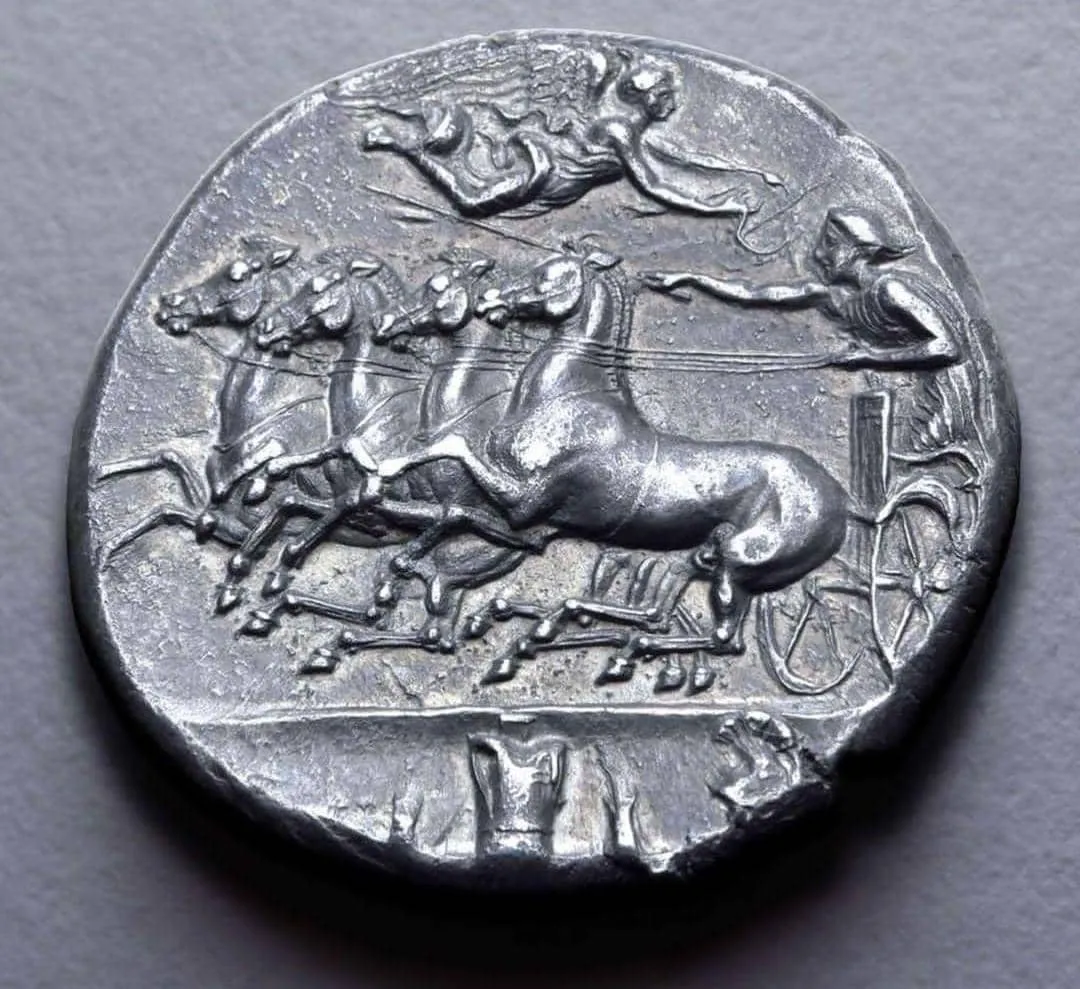
The obverse of the coin showcases a charioteer driving a galloping quadriga towards the left. In his right hand, he holds a kentron, a long stick used for goading horses, while his left hand expertly handles the reins. Above the charioteer, Nike, the winged goddess of victory, is depicted flying right and crowning him with a wreath.
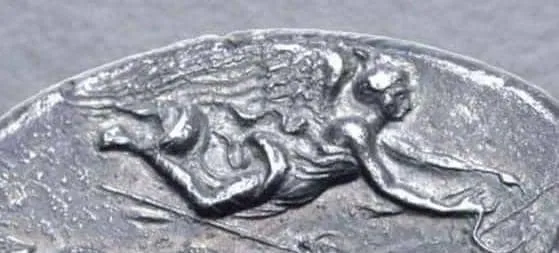
Below the captivating scene, on two slightly raised lines, a shield, pair of greaves, cuirass, and a crested Attic helmet are depicted. These elements symbolize the armor and weaponry of ancient Greek warriors. The engraving [ΑΘΛΑ] can be found in the exergue, denoting the coin's association with athletic competitions.
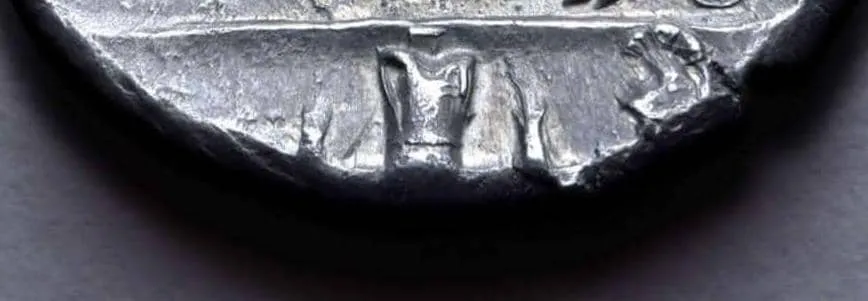
On the reverse side, we encounter a striking representation of Arethousa, the nymph associated with freshwater springs, particularly the Fountain of Arethousa in Syracuse.
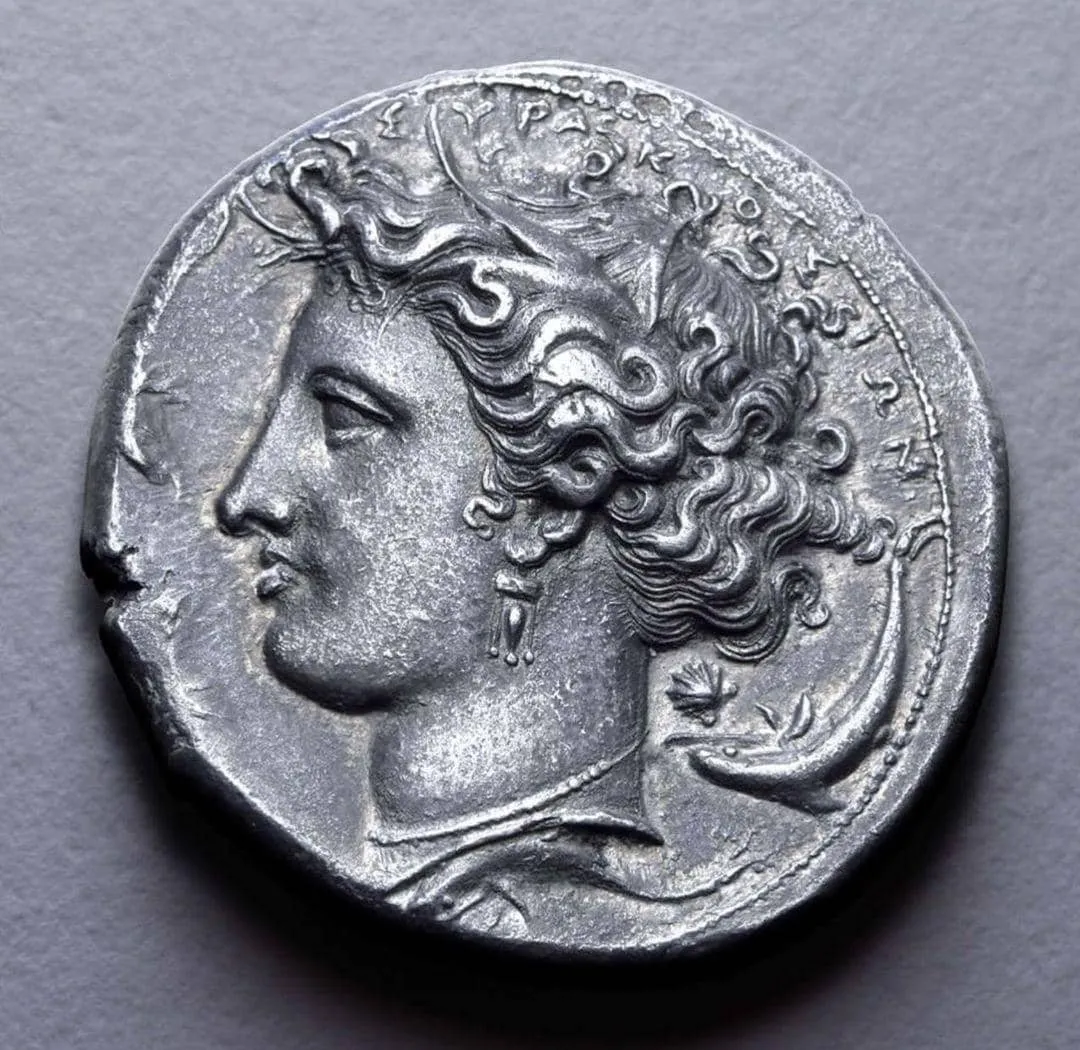
Her elegant head faces left, adorned with a wreath of reeds. She wears a triple-pendant earring and a pearl necklace, adding to her allure. Surrounding her image are four gracefully designed dolphins, a common motif in Syracuse coinage, symbolizing the city's maritime power.
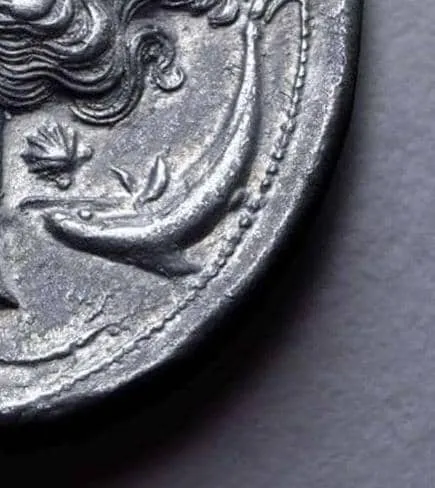
Of particular note is the signature [Ε]ΥΑ[ΙΝΕ], which indicates that the reverse die was masterfully crafted by Euainetos, adding to the coin's overall significance and value.
This Dekadrachm stands out for its exceptional craftsmanship, bold relief, and remarkable centering. The design elements are meticulously rendered, showcasing the skill and artistry of the ancient engravers. While minor traces of cleaning are evident, the coin remains in a good very fine condition, retaining its original integrity and appeal. Its provenance can be traced to notable collections such as the Boston Museum of Fine Arts (MFA 424), the Dewing Collection (893-895), the Gallatin Collection (R.VI/C.XIV), and the SNG ANS Collection (369), further validating its historical and numismatic significance.
As an enthusiast of ancient coins, I find great joy in sharing this remarkable piece with fellow collectors and enthusiasts. If you appreciate my post and would like to support my endeavors, kindly upvote, reblog, and consider following me for future updates. Rest assured, I have many more intriguing coins and fascinating stories to share from my extensive collection.